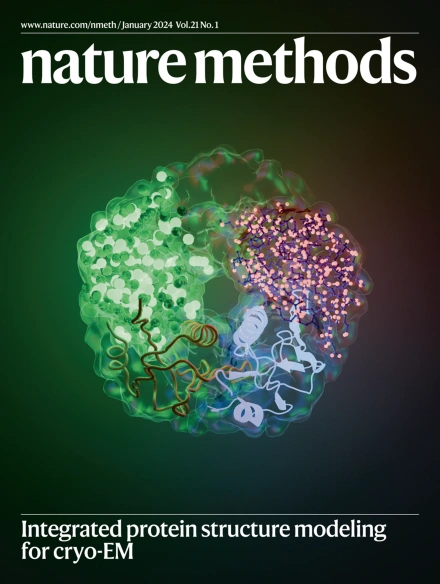基于MISO的多模态空间组学模型求解组织复杂性。
IF 36.1
1区 生物学
Q1 BIOCHEMICAL RESEARCH METHODS
引用次数: 0
摘要
空间分子分析为生物医学研究人员更好地理解细胞定位与组织功能之间的关系提供了宝贵的机会。有效地建模多模态空间组学数据对于理解组织复杂性和潜在生物学至关重要。此外,空间分辨率的提高导致了能够以亚细胞分辨率生成空间分子数据的技术的出现,这就需要开发能够处理由此产生的大规模数据集的高效计算方法。MISO (MultI-modal Spatial Omics)是一种通用的特征提取和聚类算法,能够将来自不同空间组学实验的多个模态以高空间分辨率集成在一起。其有效性在各种数据集中得到证明,包括基因表达、蛋白质表达、表观遗传学、代谢组学和组织组织学模式。MISO在识别生物学相关空间域方面优于现有方法,代表了多模态空间组学分析的实质性进步。此外,MISO的计算效率保证了其可扩展性,以处理由亚细胞分辨率空间组学技术生成的大规模数据集。本文章由计算机程序翻译,如有差异,请以英文原文为准。

Resolving tissue complexity by multimodal spatial omics modeling with MISO
Spatial molecular profiling has provided biomedical researchers valuable opportunities to better understand the relationship between cellular localization and tissue function. Effectively modeling multimodal spatial omics data is crucial for understanding tissue complexity and underlying biology. Furthermore, improvements in spatial resolution have led to the advent of technologies that can generate spatial molecular data with subcellular resolution, requiring the development of computationally efficient methods that can handle the resulting large-scale datasets. MISO (MultI-modal Spatial Omics) is a versatile algorithm for feature extraction and clustering, capable of integrating multiple modalities from diverse spatial omics experiments with high spatial resolution. Its effectiveness is demonstrated across various datasets, encompassing gene expression, protein expression, epigenetics, metabolomics and tissue histology modalities. MISO outperforms existing methods in identifying biologically relevant spatial domains, representing a substantial advancement in multimodal spatial omics analysis. Moreover, MISO’s computational efficiency ensures its scalability to handle large-scale datasets generated by subcellular resolution spatial omics technologies. MISO (MultI-modal Spatial Omics) integrates two or more spatial omics modalities, despite differences in data quality and spatial resolution for improved feature extraction and clustering to reveal biologically meaningful tissue organization.
求助全文
通过发布文献求助,成功后即可免费获取论文全文。
去求助
来源期刊

Nature Methods
生物-生化研究方法
CiteScore
58.70
自引率
1.70%
发文量
326
审稿时长
1 months
期刊介绍:
Nature Methods is a monthly journal that focuses on publishing innovative methods and substantial enhancements to fundamental life sciences research techniques. Geared towards a diverse, interdisciplinary readership of researchers in academia and industry engaged in laboratory work, the journal offers new tools for research and emphasizes the immediate practical significance of the featured work. It publishes primary research papers and reviews recent technical and methodological advancements, with a particular interest in primary methods papers relevant to the biological and biomedical sciences. This includes methods rooted in chemistry with practical applications for studying biological problems.
 求助内容:
求助内容: 应助结果提醒方式:
应助结果提醒方式:


